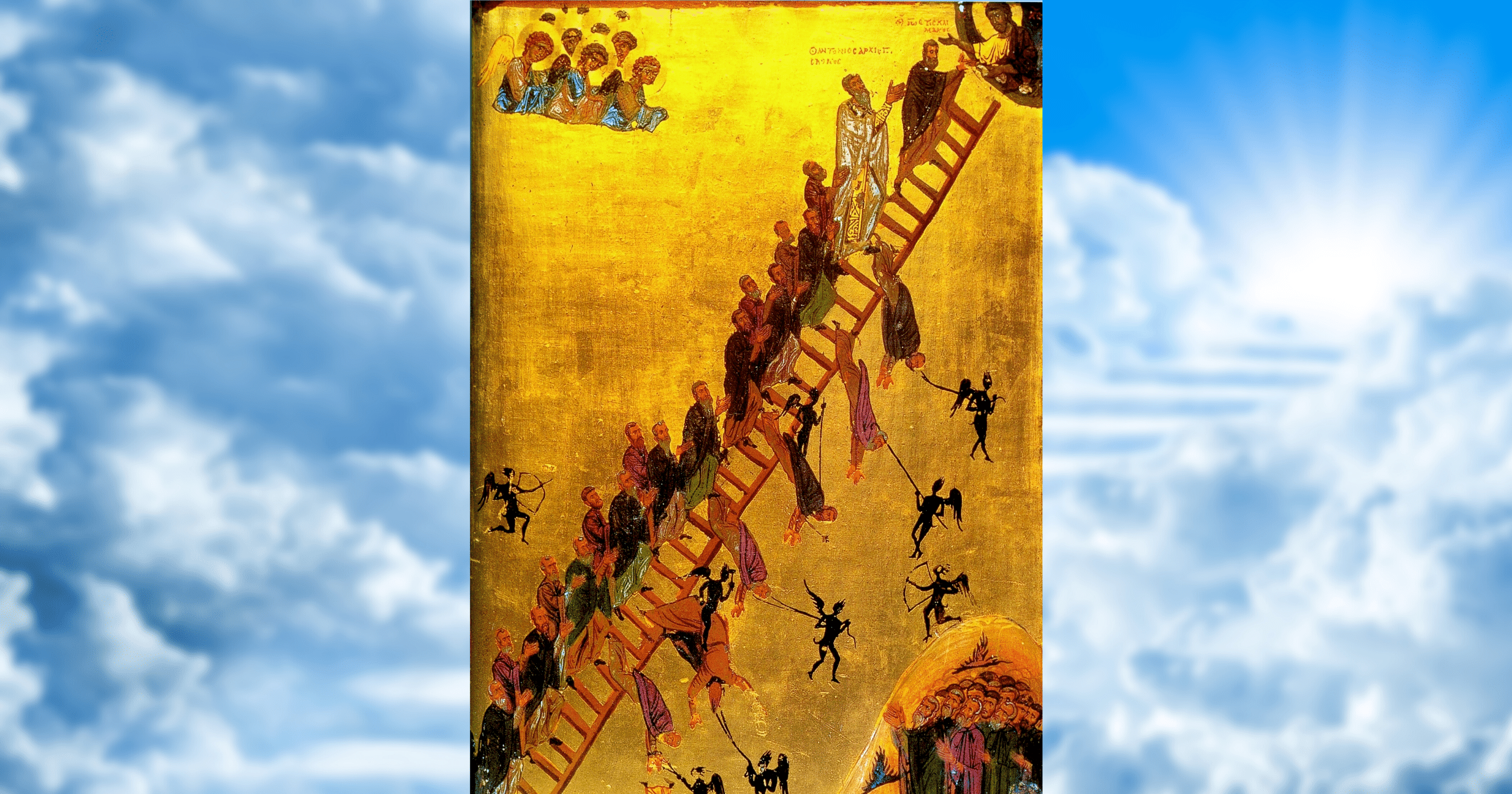According to Saint John Climacus, the “stairway to heaven” is actually real.
He called it The Ladder of Divine Ascent or The Ladder of Paradise.
The Scala to Heaven consists of 30 chapters in Climacus’ pivot treatise on ascetical practice for monasticism in the Eastern Church.
Each of the “rungs” represents the thirty years of the life of Christ, and is intended to be a model to attain the highest degree of religious perfection possible. It draws from the parables, historical events, and the virtues with practical applications for monastic life.
Written around 600 AD, it was immensely popular during its time and made Climacus prominent in the Church.
Read below an excerpt explaining the poignant meaning behind iconography for the Ladder of the Divine Ascent pictured above!
“The strategic placement of the ladder which cuts the icon into two complementary triangles, representing heaven in the higher triangular module and earth in the lower. The journey to the top of the ladder where Jesus reaches with open hands is rife with obstacles of sin represented by the demons with bow and arrows ready to take the souls of those who lack perseverance. The imagery is figurative in the sense that the demons represented visually in the icon are the sins that man battles with internally. In this case the monks that climb each rung with pain as they reach new heights. The act of climbing represents physical pain as well which is true of any exercise that defies gravity. In this sense the weight the monks feel is physical, mental, and spiritual. The icon shows several examples of monks that gave into temptation of sin as the demons with dark chains hoist their victims off the ladder and into hell. These battles are represented visually between the monks and their sin. Between the danger of climbing the ladder is a group of brothers gathered at the lower right, arms raised in prayer to the angels above in the upper left. This represents the thoughts and prayers that cut through the battlefield giving support to those on the path to heaven by way of virtue. A life based on prayer and penance as the way to salvation is the virtue they live by. The angels above to the left represent the righteous climbing the ladder below in the same way that the holy brethren to the lower right mirror the angels above.”
The Scala has English translations for those so inclined to read it! A brief outline of each of the the 30 “rungs” is below:
1. On renunciation of the world, or asceticism
2. On detachment
3. On exile or pilgrimage; concerning dreams that beginners have
4. On blessed and ever-memorable obedience in addition to episodes involving many individuals
5. On painstaking and true repentance, which constitutes the life of the holy convicts, and about the Prison
6. On remembrance of death
7. On joy-making mourning
8. On freedom from anger and on meekness
9. On remembrance of wrongs
10. On slander or calumny
11. On talkativeness and silence
12. On lying
13. On despondency
14. On that clamorous mistress, the stomach
15. On incorruptible purity and chastity, to which the corruptible attain by toil and sweat
16. On love of money, or avarice
17. On non-possessiveness that hastens one Heavenwards
18. On insensibility, that is, deadening of the soul and the death of the mind before the death of the body
19. On sleep, prayer, and psalmody with the brotherhood
20. On bodily vigil and how to use it to attain spiritual vigil, and how to practice it
21. On unmanly and puerile cowardice
22. On the many forms of vainglory
23. On mad pride and in the same Step on unclean blasphemous thoughts; concerning unmentionable blasphemous thoughts
24. On meekness, simplicity, and guilelessness, which come not from nature but from conscious effort, and on guile
25. On the destroyer of the passions, most sublime humility, which is rooted in spiritual perception
26. On discernment of thoughts, passions and virtues; on expert discernment; brief summary of all aforementioned
27. On holy stillness of body and soul; different aspects of stillness and how to distinguish them
28. On holy and blessed prayer, the mother of virtues, and on the attitude of mind and body in prayer
29. Concerning Heaven on earth, or Godlike dispassion and perfection, and the resurrection of the soul before the general resurrection
30. Concerning the linking together of the supreme trinity among the virtues; a brief exhortation summarizing all that has said at length in this book
Text: CC BY-SA 3.0, Wikimedia Foundation | Photo: Public Domain via Wikimedia Commons; Philip Steury Photography / Shutterstock.com















So, where do I find this Scala?
I found it on Amazon. Search for “St. John Climacus” or “The Ladder of Divine Ascent” by John of the Ladder.
The Ladder of Divine Ascent
The Ladder of Divine Ascent by St. John Climacus. It is sad to be the second most red book in the Greek Orthodox realm. The Bible being the most rad read.
Siri and I are going through a bad divorce so that explains all my misspellings and senselessness there. Sorry about that.